Harvest Efficiency Redefined with LoginEKO Farming Software
July 24, 2024LoginEKO Farming Software redefines harvest efficiency, optimizing operations from planning to storage. Soon to be shared globally.
Read articleAre you a farmer who is concerned about improving soil fertility? We have tested five scenarios using green manure as a method of soil improvement. Here's what we’ve learned.
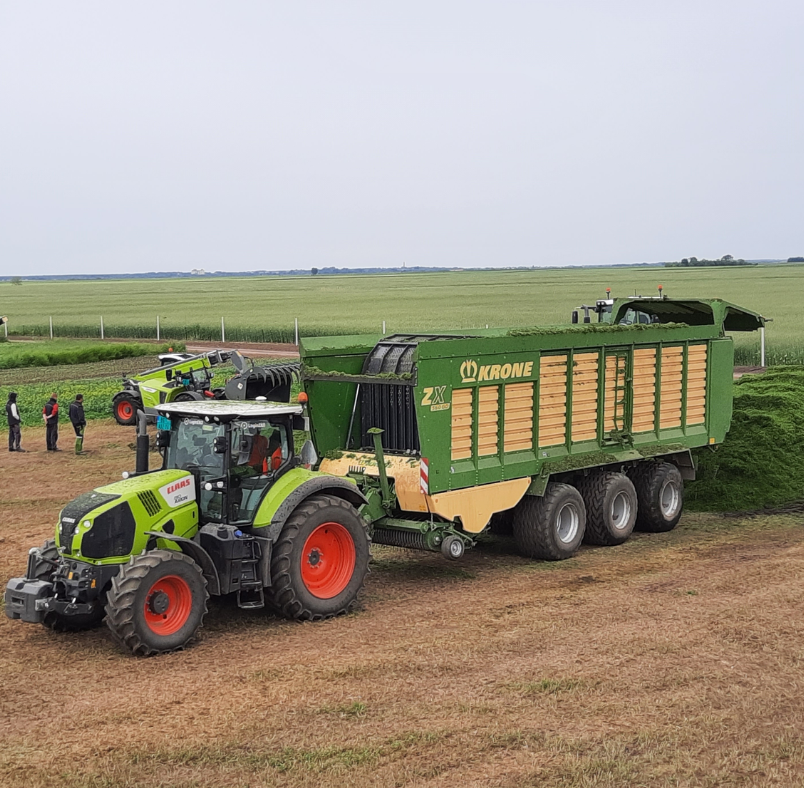
All good farmers are seriously concerned about how to improve soil fertility. One of the less known and used methods of soil improvement is the use of green manure fertilizers – plants grown specifically to be dug back into the soil to improve it. It might sound simple: just sprinkle some seed on the ground after the main crop has been harvested and then dig the plants in after a few weeks. But in practice there’s a lot more to it. At LoginEKO, we have tested five different scenarios and would like to share what we’ve learned.
Our farm is in Banat, Serbia and we’ve already explained to you about the conditions of our land and our climate. Now, let’s take a direct look at our crop usage scenarios for green fertilization (GF), which we use depending on the primary goal of production.
The harvest residues are mulched, the soil is shallowly cultivated, and leguminous seeds (usually peas) are sown after the early harvest in May or early July of vegetables or the harvest of winter stubbles. The goal is to maintain a green cover on the plot until autumn, which will provide a sufficient amount of nitrogen for the next crop.
The challenge with this scenario is that sowing and sprouting takes place in the driest and hottest months of July and August, which is why the moisture content of the soil is often insufficient for timely sprouting. We solved this by identifying legumes that better tolerate the Banat drought, and introducing an agile approach to sowing. This means sowing only in favorable weather conditions, which in our case is at the end of August when night temperatures are lower.
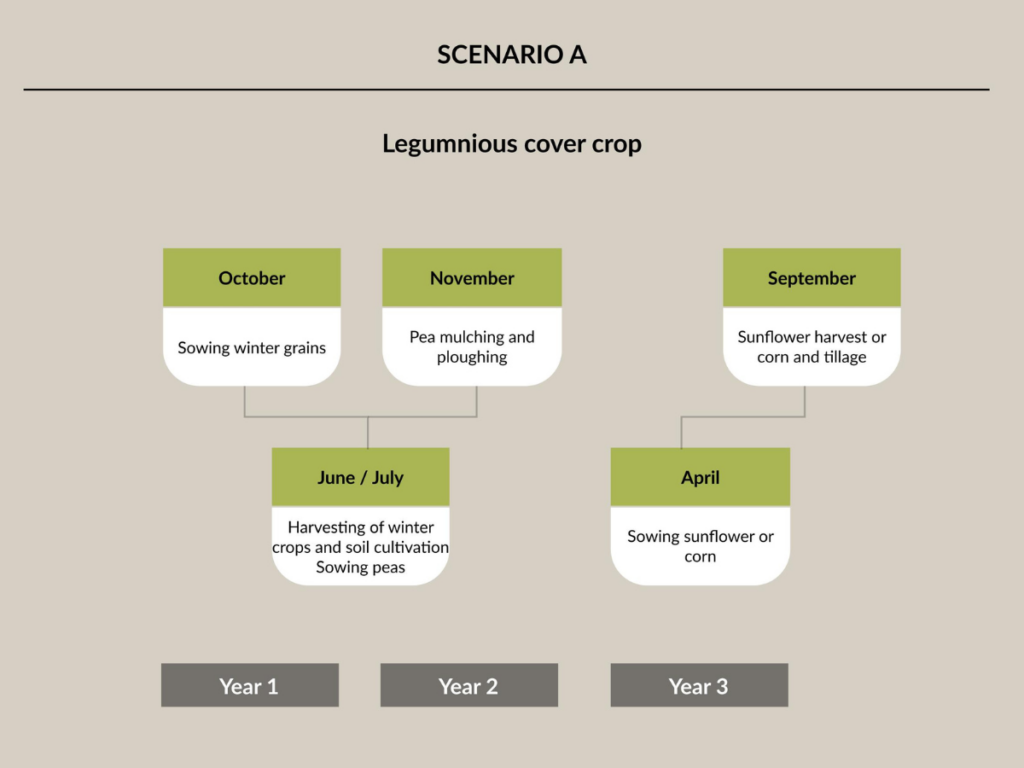
This scenario enables extremely high amounts of nitrogen. Peas sown as a pure crop or in a mixture with stubble (oat or triticale) at the beginning of October are mulched in mid-May and incorporated into the soil. Subsequent sowing of non-leguminous crops (like forage sorghum, buckwheat, or millet) prevents possible leaching of mineralized nitrogen into deeper layers and provides additional organic matter. The total mass of sorghum is mulched and returned to the soil so that losses of nitrogen produced by peas are minimal.
This scenario is acceptable to producers at the beginning of the soil conversion period or for those with an irrigation system, and to gardeners engaged in the production of late vegetables.
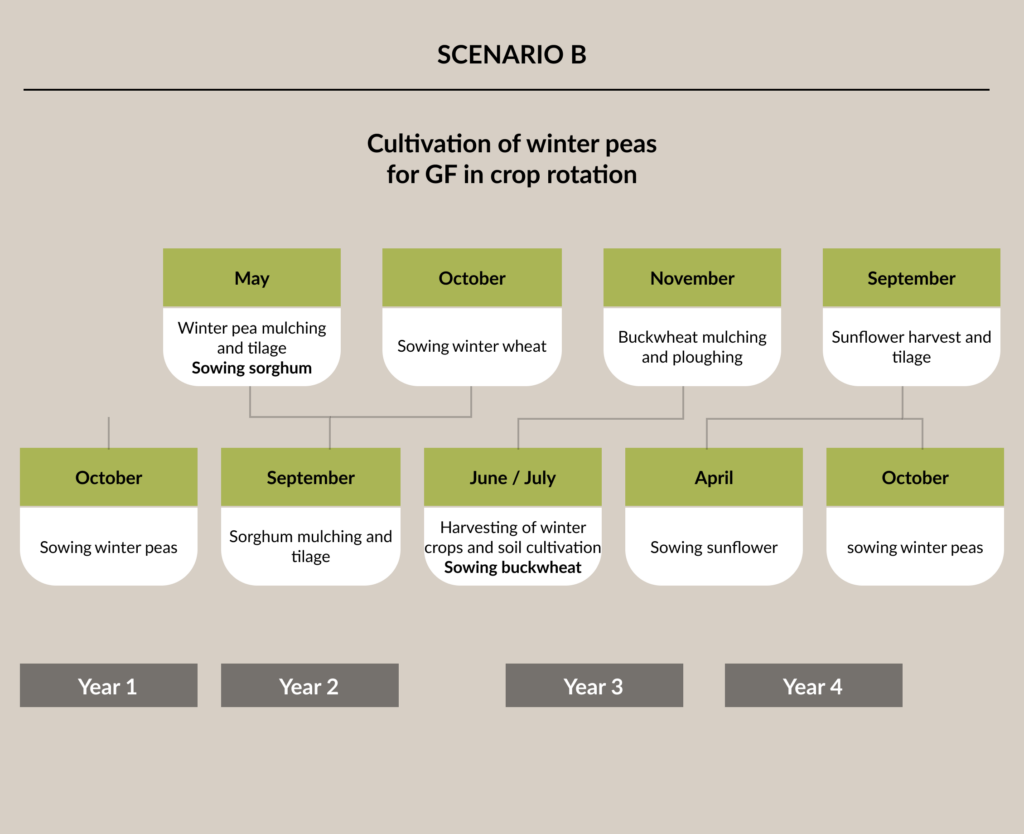
After the pea grain harvest, the crop residues are shredded and incorporated into the soil. Nitrogen provided by symbiotic fixation becomes available to other plants after mineralization of pea crop residues. This scenario is not so widely applicable in Serbia since there are no pea processing capacities in the wider region, so the areas where peas are grown for grain are relatively small.
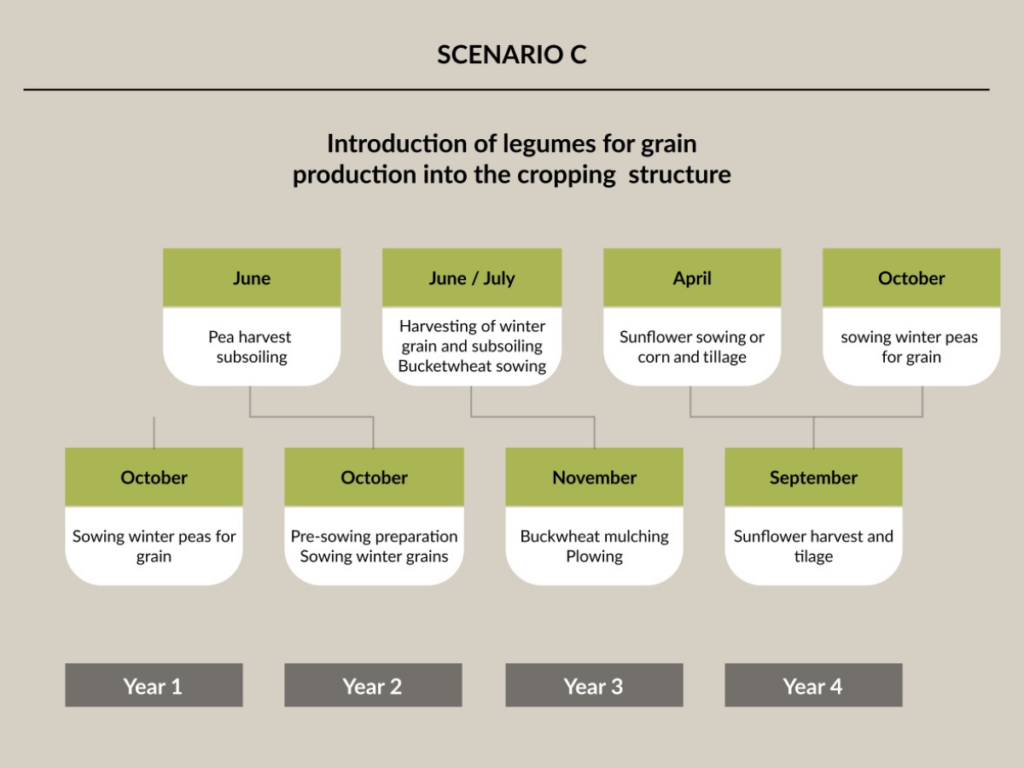
LoginEKO has effectively developed the so-called ‘relay intercropping’, when the second crop is planted before the first crop is harvested, so two crops are in the field at the same time during part of the season. Thus, both crops share some part of the season. Peas or small seed legumes (alfalfa, red clover, and bird’s-foot trefoil) are sown in established crops of winter stubble or sunflowers. The challenge here is to ensure timely sprouting of multi-cut, perennial legumes.
This production system has the greatest potential on high quality soils of good structure. The goal of production is to regenerate the leguminous crop after harvesting the main crop, and to reach a height of about 50 cm by mid-November. In this way, it is possible to provide a sufficient amount of practically free nitrogen for the next crop, as well as numerous additional ecological services (biological control of weeds, repair of the soil structure, and the reduction of soil compaction, increase in biodiversity, increase in the number of pollinators, and prevention of erosion).
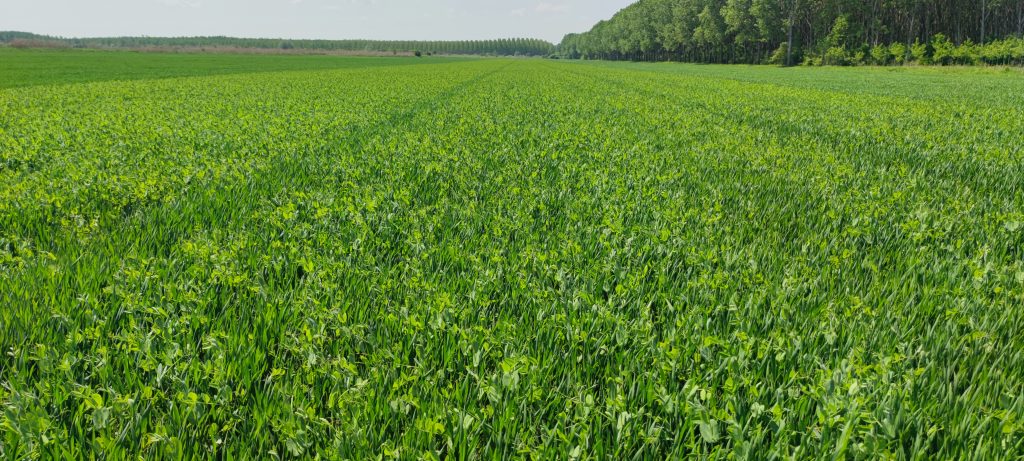
Intensive vegetable production using irrigation conditions requires large amounts of readily available nitrogen in the soil in precisely defined periods of vegetation. For such purposes, we are developing a technology for the production and use of multi-cut cultures, of which the yield of above-ground mass, after fermentation and a certain period of storage, is transported and applied on plots of interest. By applying 10 t/ha of fermented alfalfa, we achieved a 215% increase in the yield of baby leaf chard compared to the unfertilized control. However, the technology involves significantly higher costs of logistics and transport, intended exclusively for the most intensive crops.
| The effect of fertilization with alfalfa silage (10 t/ha) on the yield of leafy vegetables | ||||
| Average yield in kg/ha | baby chard | baby spinach | ||
| fertilized | not fertilized | fertilized | not fertilized | |
| First slash | 7,882 | 4,980 | 5,558 | 3,636 |
| Second slash | 7,824 | Ø | Ø | Ø |
| Total | 15,706 | 4,980 | 5,558 | 3,636 |
| Difference in % | >215.38% | >52.86% | ||
Each farmer needs to find out which green manure fertilizers work best to achieve the best soil fertility and the best results in his organic farming efforts. You need to discover which green manure fertilizers offer the best benefit for your particular soil quality, when to plant, and how to maximize the benefit. LoginEKO will help you with that because we are working on your personal easily accessible soil N meter which will be ready by the end of the year. It will help you make the right decision because it is developed on a confirmed science-based formula. Stay tuned when we’ll present it to you! We do hope though that we’ve provided you some valuable information and wish you a great harvest using green manure fertilizers. For more details, please read our scientific article. Enjoy your organic farming!
LoginEKO Farming Software redefines harvest efficiency, optimizing operations from planning to storage. Soon to be shared globally.
Read articleWhat if we told you that sunflower seeds you buy were sprayed with 9 active ingredients in pesticides? What if we told you this wouldn't have been necessary?
Read articleLoginEKO's moves into gluten-free farming tapping into rising consumer trends for a healthier market niche.
Read article